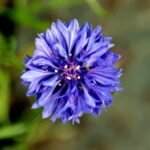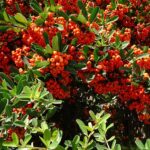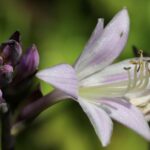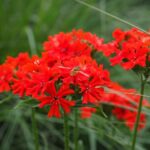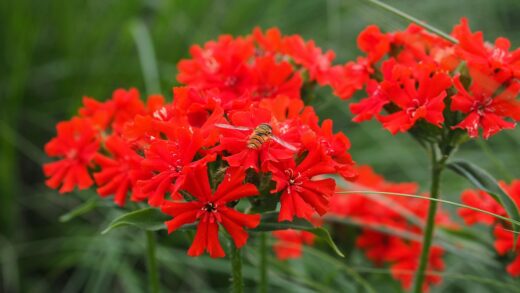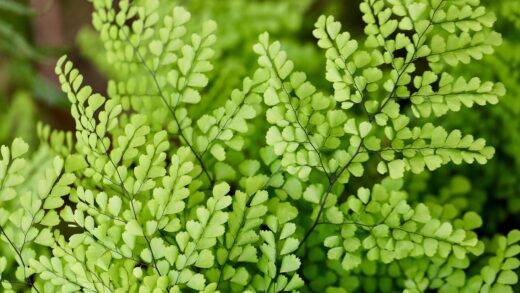The care of lemon balm
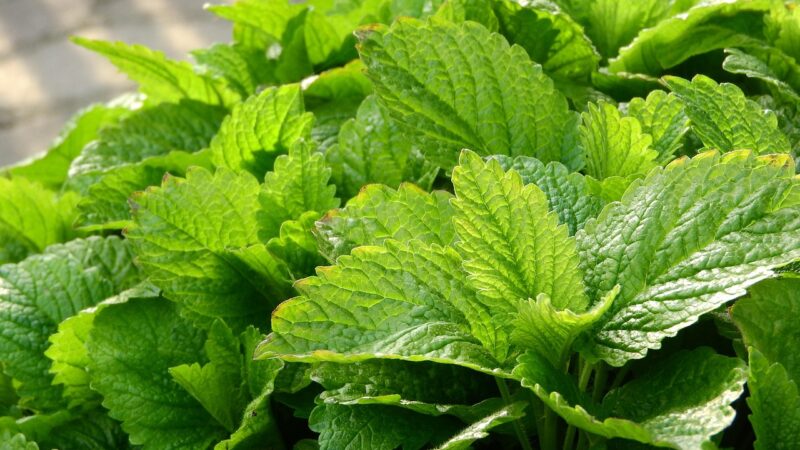
Lemon balm is a perennial herbaceous plant in the mint family and is native to south-central Europe, the Mediterranean Basin, Iran, and Central Asia, though it is now naturalized in the Americas and elsewhere. It is a plant that requires relatively little maintenance, making it a favorite among both novice and experienced gardeners. Its lemon-scented leaves are a delightful addition to teas, desserts, and potpourris, and its cultivation can be a rewarding experience. Understanding its basic needs is the first step toward a thriving, aromatic patch of this wonderful herb, ensuring a bountiful harvest throughout the growing season.
The plant’s resilience makes it adaptable to a variety of garden settings, from dedicated herb gardens to mixed perennial borders. It thrives in a wide range of climates and can tolerate conditions that might be challenging for more delicate herbs. However, to truly flourish and produce the most aromatic leaves, some fundamental care principles should be observed. This includes providing the right amount of sunlight, ensuring proper soil conditions, and maintaining adequate moisture levels. By paying attention to these core requirements, you can cultivate a robust and healthy lemon balm plant that will provide years of enjoyment.
One of the most appealing aspects of growing lemon balm is its vigorous growth habit, which, while beneficial for harvesting, can also lead to it becoming invasive if not managed properly. This tendency to spread is characteristic of many members of the mint family, and it is an important factor to consider when choosing a planting location. Regular pruning and harvesting are not just beneficial for using the herb, but also crucial for keeping the plant’s growth in check. Containment methods, such as planting in pots or using root barriers, can be effective strategies for preventing it from taking over the garden.
Beyond its culinary and aromatic uses, lemon balm is also valued for its attractive appearance. Its lush, green foliage provides a lovely backdrop for other plants, and its small, inconspicuous white flowers are a valuable source of nectar for pollinators like bees and butterflies. Integrating lemon balm into a garden design can therefore contribute to a healthier and more vibrant ecosystem. Its ability to attract beneficial insects makes it a valuable companion plant, helping to support the overall health of the garden while requiring minimal input from the gardener.
Soil and location requirements
Choosing the right location and preparing the soil are foundational steps for successfully cultivating lemon balm. This herb prefers a spot that receives full sun to partial shade, with the ideal being morning sun and some protection from the intense afternoon heat, especially in warmer climates. Too much direct, harsh sunlight can scorch the leaves and reduce the concentration of essential oils, which are responsible for its characteristic lemon scent and flavor. Therefore, a location that offers a balance of light and shade will promote the healthiest growth and most aromatic foliage.
More articles on this topic
Lemon balm is not particularly fussy about soil type, but it performs best in well-drained, moderately fertile loam. The soil should be able to retain some moisture without becoming waterlogged, as soggy conditions can lead to root rot, a common issue for many herbs. Before planting, it is beneficial to amend the soil with organic matter, such as compost or well-rotted manure. This will improve the soil’s structure, aeration, and nutrient content, creating an optimal growing environment for the plant to establish a strong root system.
The pH of the soil is another factor to consider for optimal growth. Lemon balm thrives in a soil pH range of 6.0 to 7.5, which is slightly acidic to neutral. Most garden soils fall within this range, but it is always a good practice to test the soil pH before planting. If the soil is too acidic, lime can be added to raise the pH, while sulfur can be used to lower a pH that is too alkaline. Ensuring the correct pH level allows the plant to efficiently absorb nutrients from the soil, leading to more vigorous growth.
When considering its placement in the garden, remember its tendency to spread aggressively through underground rhizomes. To prevent it from overtaking neighboring plants, consider planting it in a container that can be sunk into the ground, or install a root barrier around the planting area. Alternatively, growing lemon balm in a large pot or raised bed is an excellent way to keep its growth contained. This not only controls its spread but also allows for easier management of soil conditions and watering.
Watering needs
Proper watering is crucial for maintaining a healthy lemon balm plant, although it is relatively drought-tolerant once established. The key is to provide consistent moisture, especially during the plant’s active growing season in the spring and summer. Young plants, in particular, require regular watering to help them develop a strong and deep root system. The soil should be kept evenly moist but not saturated; a good rule of thumb is to water thoroughly when the top inch of soil feels dry to the touch.
More articles on this topic
The frequency of watering will depend on several factors, including the climate, soil type, and whether the plant is grown in a container or in the ground. Plants in sandy soils or in containers will dry out more quickly and may need to be watered more often than those in loamy soil in a garden bed. During periods of high heat or drought, it is especially important to monitor the moisture levels and increase watering frequency as needed. Overwatering can be just as detrimental as underwatering, leading to root rot and other fungal diseases, so ensuring good drainage is paramount.
One effective watering technique is to apply water directly to the base of the plant, avoiding the foliage as much as possible. This method ensures that the water reaches the root zone where it is needed most and helps to prevent the spread of foliar diseases that can thrive in damp conditions. A soaker hose or drip irrigation system can be particularly beneficial for this purpose, as it delivers water slowly and deeply into the soil, promoting deep root growth and minimizing water loss through evaporation.
As the growing season comes to an end and the plant enters dormancy in the autumn, its water requirements will decrease significantly. During this time, it is important to reduce the frequency of watering, allowing the soil to dry out more between waterings. For plants grown in regions with winter rainfall, supplemental watering may not be necessary at all during the dormant period. The goal is to prevent the soil from becoming completely bone-dry while avoiding the overly wet conditions that can harm the dormant roots.
Fertilization practices
Lemon balm is not a heavy feeder and generally does not require extensive fertilization to thrive. In fact, excessive feeding, particularly with nitrogen-rich fertilizers, can lead to lush, rapid foliage growth but with a significantly reduced concentration of essential oils. This results in leaves that are less fragrant and flavorful, diminishing one of the primary reasons for growing the herb. Therefore, a conservative approach to fertilization is recommended for the best results.
For lemon balm planted in reasonably fertile garden soil that has been amended with compost, additional fertilization may not be necessary at all throughout the growing season. The organic matter in the compost will break down slowly, releasing a steady supply of nutrients to the plant. If the plant is grown in poorer soil or in a container where nutrients can be leached out more quickly with watering, a light feeding may be beneficial. A balanced, all-purpose liquid fertilizer, diluted to half-strength, can be applied once or twice during the spring and early summer.
The timing of fertilization is also an important consideration. If you choose to fertilize, it is best to do so in the spring as new growth emerges. This will provide the plant with the nutrients it needs to support healthy foliage development. Avoid fertilizing late in the summer or in the autumn, as this can encourage new, tender growth that may be susceptible to damage from early frosts. The focus should be on supporting steady, healthy growth rather than forcing rapid, weak development.
Observing the plant’s appearance is often the best way to determine if it needs feeding. A healthy lemon balm plant will have vibrant, green leaves and steady growth. If the leaves start to appear pale or yellowed, and growth seems stunted, it could be an indication of a nutrient deficiency. In such cases, a light application of a balanced fertilizer can help to correct the issue. However, it is always important to first rule out other potential causes, such as improper watering or poor drainage, before resorting to fertilization.
Pruning and harvesting
Regular pruning and harvesting are essential components of lemon balm care, serving both to maintain the plant’s health and to provide a continuous supply of fresh leaves. Lemon balm responds very well to being cut back, and doing so encourages it to become bushier and more compact rather than tall and leggy. The best time to harvest leaves is in the morning, after the dew has dried but before the sun becomes too intense, as this is when the concentration of essential oils in the leaves is at its highest.
Throughout the growing season, you can harvest individual leaves or stems as needed. For a larger harvest, you can shear the entire plant back by about half its height. This can be done two to three times during the season, with the first major harvest typically occurring just before the plant begins to flower. Cutting the plant back before it blooms helps to maintain the best flavor and aroma in the leaves, as the plant’s energy is directed towards foliage production rather than flower and seed development.
After a major harvest or pruning, it is beneficial to give the plant a deep watering to help it recover and stimulate new growth. A light application of a balanced liquid fertilizer, diluted to half-strength, can also be helpful at this time, especially for container-grown plants. Within a few weeks, the plant will produce a fresh flush of tender new leaves, ready for another harvest. This cycle of cutting back and regrowth will ensure a plentiful supply of lemon balm throughout the spring and summer.
In late autumn, after the first frost has caused the foliage to die back, the plant should be cut back hard, leaving just a few inches of stem above the ground. This helps to tidy up the garden and removes any dead or potentially diseased plant material. This final pruning prepares the plant for winter dormancy and encourages strong, healthy growth to emerge from the base in the following spring. It is a simple but important step in the annual care cycle of this resilient herb.
Pest and disease management
Lemon balm is a robust herb that is generally resistant to many common pests and diseases, thanks in part to the natural essential oils in its leaves. However, like any plant, it can occasionally fall victim to certain problems, particularly when it is stressed or grown in less-than-ideal conditions. Good cultural practices, such as providing adequate air circulation, proper watering, and well-drained soil, are the first and most effective line of defense against most issues.
One of the most common diseases that can affect lemon balm is powdery mildew. This fungal disease appears as a white, powdery coating on the leaves and stems, and it is most prevalent in warm, humid conditions with poor air circulation. To prevent powdery mildew, ensure that plants are spaced appropriately to allow for airflow, and water at the base of the plant to keep the foliage dry. If an infection occurs, affected leaves should be removed, and in severe cases, a fungicide suitable for herbs can be applied.
In terms of pests, aphids and spider mites can sometimes be a problem, especially on plants that are stressed or grown indoors. Aphids are small, pear-shaped insects that cluster on new growth and the undersides of leaves, sucking sap and causing distortion. Spider mites are tiny arachnids that are difficult to see with the naked eye but can be identified by the fine webbing they create on the plant. Both pests can often be controlled by a strong spray of water from a hose or by applying insecticidal soap.
Root rot is another potential issue, and it is almost always caused by overwatering or poorly drained soil. The symptoms of root rot include yellowing leaves, wilting, and a general decline in the plant’s health. To prevent this, it is crucial to plant lemon balm in a location with good drainage and to be mindful of watering practices. If root rot is suspected, you may need to dig up the plant, trim away any blackened, mushy roots, and replant it in fresh, well-draining soil, adjusting your watering schedule accordingly.
Overwintering care
Lemon balm is a hardy perennial, typically capable of surviving winters in USDA zones 4 through 9. In most of these zones, the plant will die back to the ground after the first hard frost and re-emerge from its roots the following spring. The primary goal of overwintering care is to protect the root system from extreme cold and fluctuating temperatures, ensuring the plant has the resources it needs to resume growth when the weather warms.
For lemon balm planted in the ground, a simple layer of mulch applied in late autumn can provide sufficient protection for the dormant roots. After cutting the plant back to a few inches above the ground, apply a 2 to 3-inch layer of organic mulch, such as shredded leaves, straw, or wood chips, over the crown of the plant. This mulch layer helps to insulate the soil, preventing it from freezing and thawing repeatedly, which can damage the roots. The mulch should be pulled back in the spring as new growth begins to appear.
Lemon balm grown in containers is more vulnerable to winter cold, as the roots are not as well-insulated as they would be in the ground. In colder climates (zones 4-6), it is often best to move potted lemon balm to a sheltered location, such as an unheated garage, a cold frame, or a protected porch. The goal is to keep the roots from freezing solid. The soil should be kept lightly moist throughout the winter, but not wet, to prevent the roots from drying out completely.
In milder climates (zones 7-9), container-grown lemon balm may be able to survive the winter outdoors, especially if the pot is large. To provide extra protection, you can wrap the container in bubble wrap or burlap to insulate the roots. Grouping several pots together can also help them to retain warmth. Regardless of the method, the key is to protect the roots from the harshest of the winter elements, allowing the plant to rest and gather energy for the upcoming growing season.








